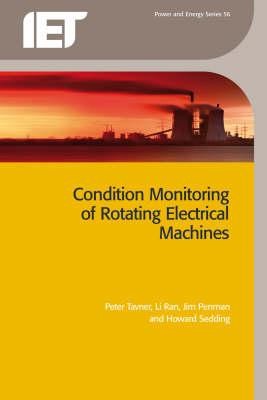
- We will send in 10–14 business days.
- Author: Peter Tavner
- Publisher: Institution of Engineering & Technology
- ISBN-10: 0863417418
- ISBN-13: 9780863417412
- Format: 15.6 x 23.4 x 1.6 cm, minkšti viršeliai
- Language: English
- SAVE -10% with code: EXTRA
Condition Monitoring of Rotating Electrical Machines (e-book) (used book) | bookbook.eu
Reviews
Description
Condition monitoring of engineering plant has increased in importance as engineering processes are automated and manpower is reduced. However, electrical machinery receives attention only at infrequent intervals when plant is shut down and the application of protective relays to machines has also reduced operator surveillance.
A first edition of Condition Monitoring of Electrical Machines, written by Tavner and Penman, was published in 1987. The economics of industry have now changed, as a result of the privatisation and deregulation of the energy industry, placing emphasis on the importance of reliable operation of plant, throughout the whole life cycle, regardless of first cost. The availability of advanced electronics and software in powerful instrumentation, computers, and digital signal processors (DSP) has simplified our ability to instrument and analyse machinery. As a result condition monitoring is now being applied to a wider range of systems, from fault-tolerant drives of a few hundred watts in the aerospace industry, to machinery of a few hundred megawatts in major capital plant.
In this new book the original authors have been joined by Ran, an expert in power electronics and control, and Sedding, an expert in the monitoring of electrical insulation systems. Together the authors have revised and expanded the earlier book, merging their own experience with that of machine analysts to bring it up to date. The book is aimed at professional engineers in the energy, process engineering and manufacturing industries, plus research workers and students.
EXTRA 10 % discount with code: EXTRA
The promotion ends in 22d.17:59:18
The discount code is valid when purchasing from 10 €. Discounts do not stack.
- Author: Peter Tavner
- Publisher: Institution of Engineering & Technology
- ISBN-10: 0863417418
- ISBN-13: 9780863417412
- Format: 15.6 x 23.4 x 1.6 cm, minkšti viršeliai
- Language: English English
Condition monitoring of engineering plant has increased in importance as engineering processes are automated and manpower is reduced. However, electrical machinery receives attention only at infrequent intervals when plant is shut down and the application of protective relays to machines has also reduced operator surveillance.
A first edition of Condition Monitoring of Electrical Machines, written by Tavner and Penman, was published in 1987. The economics of industry have now changed, as a result of the privatisation and deregulation of the energy industry, placing emphasis on the importance of reliable operation of plant, throughout the whole life cycle, regardless of first cost. The availability of advanced electronics and software in powerful instrumentation, computers, and digital signal processors (DSP) has simplified our ability to instrument and analyse machinery. As a result condition monitoring is now being applied to a wider range of systems, from fault-tolerant drives of a few hundred watts in the aerospace industry, to machinery of a few hundred megawatts in major capital plant.
In this new book the original authors have been joined by Ran, an expert in power electronics and control, and Sedding, an expert in the monitoring of electrical insulation systems. Together the authors have revised and expanded the earlier book, merging their own experience with that of machine analysts to bring it up to date. The book is aimed at professional engineers in the energy, process engineering and manufacturing industries, plus research workers and students.


Reviews